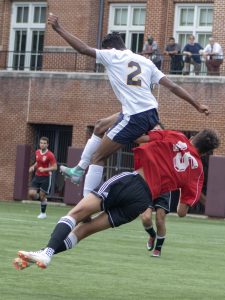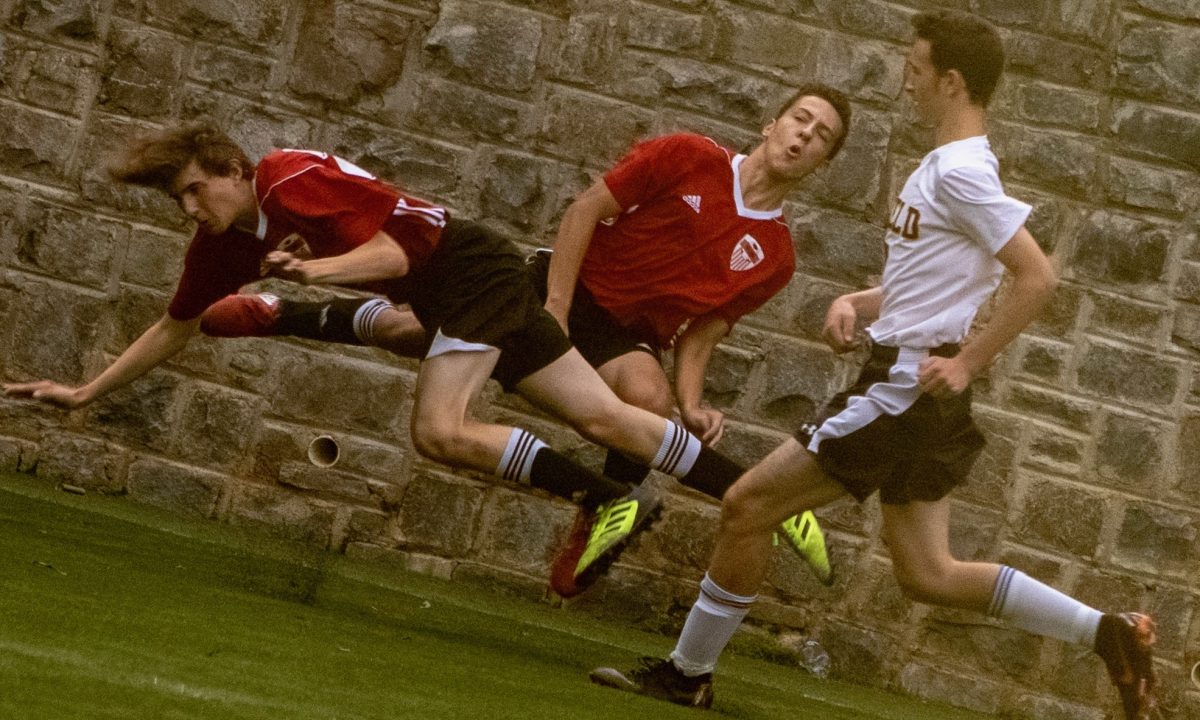Sporting events are an everyday occurrence on the Tregaron campus. After school, the gym and field are almost always occupied, and loads of athletes pack onto yellow school buses to head to away games. But, when a WIS student-athlete is on the ground in tears of pain or sitting on the sideline covered in ice, that often goes unnoticed.
According to the Center for Disease Control (CDC), sports injuries are the most common cause of emergency room visits for children and adolescents between the ages of 12 and 17. The National Athletic Trainers’ Association reports that 90% of high school aged athletes have had some type of sports-related injury and 54% of those athletes claim to have played while injured. WIS is no exception. Athletic trainer Patrick Altekruse says he treats 200-300 injuries every year.

“Most of [the injuries] are pretty minor,” Altekruse said. “But, there are times when the injury is not minor and we need to call in extra help.”
Despite most injuries being easily treatable, ambulances have come up the Tregaron driveway and taken athletes to the hospital. For example, a basketball player from the McLean School was taken in an ambulance during a boys varsity game last year, after a scary fall onto the hardwood. In cases like that, it is Altekruse’s job to make sure the athlete stays safe until paramedics arrive.
In Altekruse’s eight years at WIS, he has seen improvement in the health of the school’s student-athletes. Before 2011, WIS’s athletic trainer was not around as much as our current trainer. “We’re on par with most other local schools now,” Altekruse said. “I think I’m doing a better job this year than last year.”
The health issues concerning WIS athletes don’t all involve physical injuries. During this year’s preseason soccer practices in August, heatstroke was a tremendous problem among the players. Heatstroke and heat exhaustion were especially on people’s minds given the death of local University of Maryland football player Jordan McNair. McNair had a seizure at a scorching summer practice after showing extreme signs of exhaustion. He died at a hospital two weeks later.
“[The WIS players] were overdoing it and hadn’t done a lot over the summer,” Aletekruse said, regarding the preseason practices. “They came in and the coaches wanted to get them up to speed pretty quickly.”
Boys varsity soccer coach Bardia Sassanpour, in his first year as head coach, emphasized conditioning during his preseason workouts. He had his players doing all kinds of fitness, including long-distance runs and sprints up the double hill under the hot sun. The workouts caused exhaustion and heatstroke among many of the players. Some players lied on the turf with anguished looks and drenched themselves with water, while other players tried as hard as they could to toughen up and keep playing. In one instance, sophomore Diego Maldonado vomited during practice on a set of stairs by the field.
“As soon as we got back to the field from our run I just like collapsed and laid down on the floor and I started getting lightheaded,” Maldonado said. “As soon as I got onto the field to do a drill, I sat down to tie my shoes and felt like I couldn’t get up and I knew I was gonna yack.”
Maldonado walked to the water fountain and threw up three times. Nobody noticed, and he proceeded to jog back onto the field and try to continue with practice. “I thought that if I asked to sit out, Bardia would get pissed,” Maldonado said. “I thought I would get better with time.”
“Players want to keep on playing and that’s definitely not the right thing to do,” said Altekruse, who pulled Maldonado off the field once he found out about his vomiting.
WIS athletes do occasionally suffer from major and minor health issues, but WIS has never had a problem with a large amount of dangerous sports-related injuries.
“Some schools may have more thorough health service programs,” Altekruse said. “But, I think we do a pretty darn good job here at WIS.”
By Saul Pink


































































